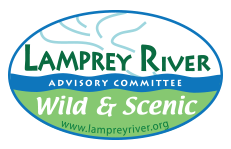TEACHER BACKGROUND-pH: ACIDIC OR BASIC
Background:
The pH scale runs from 0 to 14, with 7 as neutral between acidic and basic substances. Plants do well in slightly basic water (between 7 and 8 on the scale). Water animals and most plants cannot live in water that is 5 or less (very acidic) on the scale. The scale increases by powers of 10 moving from number to number. A substance with pH 4 is 10 times more acidic than a substance with pH 5 and 100 times more acidic than a substance with pH 6.
At this station students will measure whether water at each location is acidic, basic (alkaline), or neutral and learn what that indicates about the water. Ordinary rainwater is slightly acidic, usually with a pH of about 5.6. Acid rain is usually below 5.0. The acid in rain (or snow) is created when sulfur dioxide and nitrogen dioxide (byproducts from burning fossil fuels) react with water and atmospheric oxygen to produce sulfuric acid and nitric acid. Hundreds of lakes in North America and Scandinavia have become so acidic (below 5 on the scale) that they no longer can support frogs or fish. In North America, half of the high mountain lakes in the Adirondacks no longer have fish because of high acidity. (Vesilind and Pierce, Environmental Pollution and Control.) Lakes in North America and Scandinavia tend to be slightly acidic naturally due to the presence of acidic trees, such as conifers and oaks, and because the bedrock has no ability to neutralize acid. Granite, for example, does not contain any alkaline substances. When acid rain falls or drains into an already acidic lake, the result is even greater acidity, or lower pH. If acid rain falls on land that has alkaline qualities, the acidity is neutralized. (Acid plus base yields neutral water.)
pH scale
|
strongest acids |
0 |
battery acid |
|
|
1 |
|
|
|
2 |
lemon juice |
|
|
3 |
vinegar |
|
weak acids |
4 |
orange juice |
|
|
5 |
most rain |
|
|
6 |
|
|
neutral |
7 |
distilled water |
|
|
8 |
blood, ocean water |
|
weak bases |
9 |
baking soda |
|
|
10 |
|
|
|
11 |
|
|
|
12 |
ammonia |
|
|
13 |
bleach |
|
strongest bases |
14 |
lye |
Preparation:
Obtain a wide-ranging pH kit, one that shows all 14 levels of pH. These are available from the LaMotte Company for about $30. Some high schools or middle schools have these kits and will loan them to you for limited use.
This link provides information about purchasing LaMotte’s pH kits. http://www.lamotte.com/pages/edu/ind-kits/acidity.html

Procedure:
1. Prepare four "mystery substances," each placed in a separate jar. Mark the jars "A", "B", "C", and "D" and make a list of what is in each jar. The substances should be rainwater, tap water with lemon juice, ammonia, and white vinegar. Each substance should be as transparent as possible.
2. Discuss what the substances might be with the students. Can they tell by looking? How else can they find out? Be sure they understand that tasting an unknown liquid is not safe. Tell the students that we have other techniques. One is to use an indicator, something that has been pre-tested with a variety of liquids to determine a scale of measures that we can use with unknown substances. Most elementary science texts have an experiment showing how to boil red cabbage in water and then use the water as an indicator of acidic and basic (alkaline) liquids. This will aid in understanding what an indicator is.
CHAPERONE CHEAT SHEET: pH
Collect a water sample using a small pail. Tear off a strip of pH paper. Dip one end of the pH strip in the water sample. Wait for the paper to finish changing color, and then compare the strip color to the chart on the dispenser to determine the pH of the water. Record the reading on the data sheet under the correct site number or town.
pH 6.0 to 7.5 is excellent.
pH 5.5 to 6.0 is OK.
pH lower than 5.5 is poor, too acidic for most living things.
STUDENT EXPERIMENTS- pH TEAM
Overview:
In this experiment, your team will measure whether water in the river is acidic, basic (alkaline), or neutral and learn what that indicates about the water. The most common way to determine this is to measure the concentration of hydrogen ions in the water, which is the water's pH. The term “pH” comes from combining the letter “p” from the German word “potenz” meaning “power” with H, the chemical symbol for hydrogen. Changes in pH values of water are important to the health of many organisms. Fish and most plants need to live in water that is between 5 and 7 on the pH scale. Can fish live in this river? Can plants live here?
Focus:
What is the pH of the water at your sites? How does the pH affect plants and animals that live there?
Materials:
Pre-field trip supplies:
___wide-range pH kit (available from science supply stores)
___four "mystery substances" prepared by your teacher in jars labeled A, B, C, D
___science journals with A, B, C, D listed or the mystery substances lab sheet
___pencils
Field trip supplies:
___pH kits (available from science supply stores)
___one clean baby-food jar per team member
___diagram showing pH ranges that can support life
___data sheets and clipboards
___pencils
Procedure:
Pre-field experiment:
1. Look at mystery substance A. List “A” in your science journal and what you observe about it. Does its appearance (color, thickness, etc.) help you determine what it is?
2. Open the jar. Then, holding the jar away from your face, wave your hand over the top of the jar toward your nose a few times. Sniff the air. DO NOT STICK YOU NOSE OVER THE JAR AND SNIFF DIRECTLY! Does the odor help you determine what it is?
3. Test the substance using your pH kit. Is the substance acidic or basic? Write the pH number down in your science journal next to the letter A or on the lab sheet. Does this information help you identify the substance?
4. Repeat steps 1-3 to test the other “mystery substances”.
5. Once you have completed the testing of each substance and recorded your findings in your science journal, guess what the four substances might be. Check with your teacher to see if you are correct. Record this information next to the pH readings in your journal or on the lab sheet.
**Note: Before doing the above activity, students could test the pH of known substances. A second lab sheet is provided listing various substances that students could test.
Field experiment:
1. Collect a sample of water from your chosen site along the river.
2. Test the pH of the sample immediately after collecting it, according to the directions in your kit. (Changes of several degrees in temperature or exposure to air can change the reading a bit.)
3. Record the pH value on your data sheet. How does this sample's reading compare to those of the mystery samples that you tested in class? Which of the mystery sample readings is it most like? Is this a good site for fish and for plants? Why?
Discussion:
1. What was the pH of the rainwater you measured at the pre-field station _______? What was the pH of the river water at your field site _______?
2. Are they the same or different? Why? What could make the pH of rainwater different from the pH of the water at your river site?
What Are the Mystery Substances? Data Sheet
Group _____________________________
|
substance |
observation: What is the pH for this substance? |
What do you think this substance is? |
What is the substance? |
|
1. A |
|||
|
2. B |
|||
|
3. C |
|||
|
4. D |
|||
Look at your data table. Which substances are acids? ____________________________
_______________________________________________________________________
Do you think the Lamprey River water is acidic or basic? __________________________
Why? __________________________________________________________________
________________________________________________________________________
________________________________________________________________________
What is the pH of common liquids?
Group ___________________________________
|
substance |
observation: What color do you observe? |
What is the pH for this liquid? |
conclusion: Is the substance acidic, basic, or neutral? |
|
rainwater |
|||
|
milk |
|||
|
soda |
|||
|
salt water |
|||
|
milk of magnesia |
|||
|
white vinegar |
|||
|
corn syrup |
|||
|
shampoo |
|||
|
ammonia |
|||
|
tea |
|||
|
tap water with lemon juice |
Look at your data table. Which substances are acids? ____________________________
_______________________________________________________________________
Do you think the Lamprey River is acidic or basic? _______________________________
Why? __________________________________________________________________
________________________________________________________________________
________________________________________________________________________

